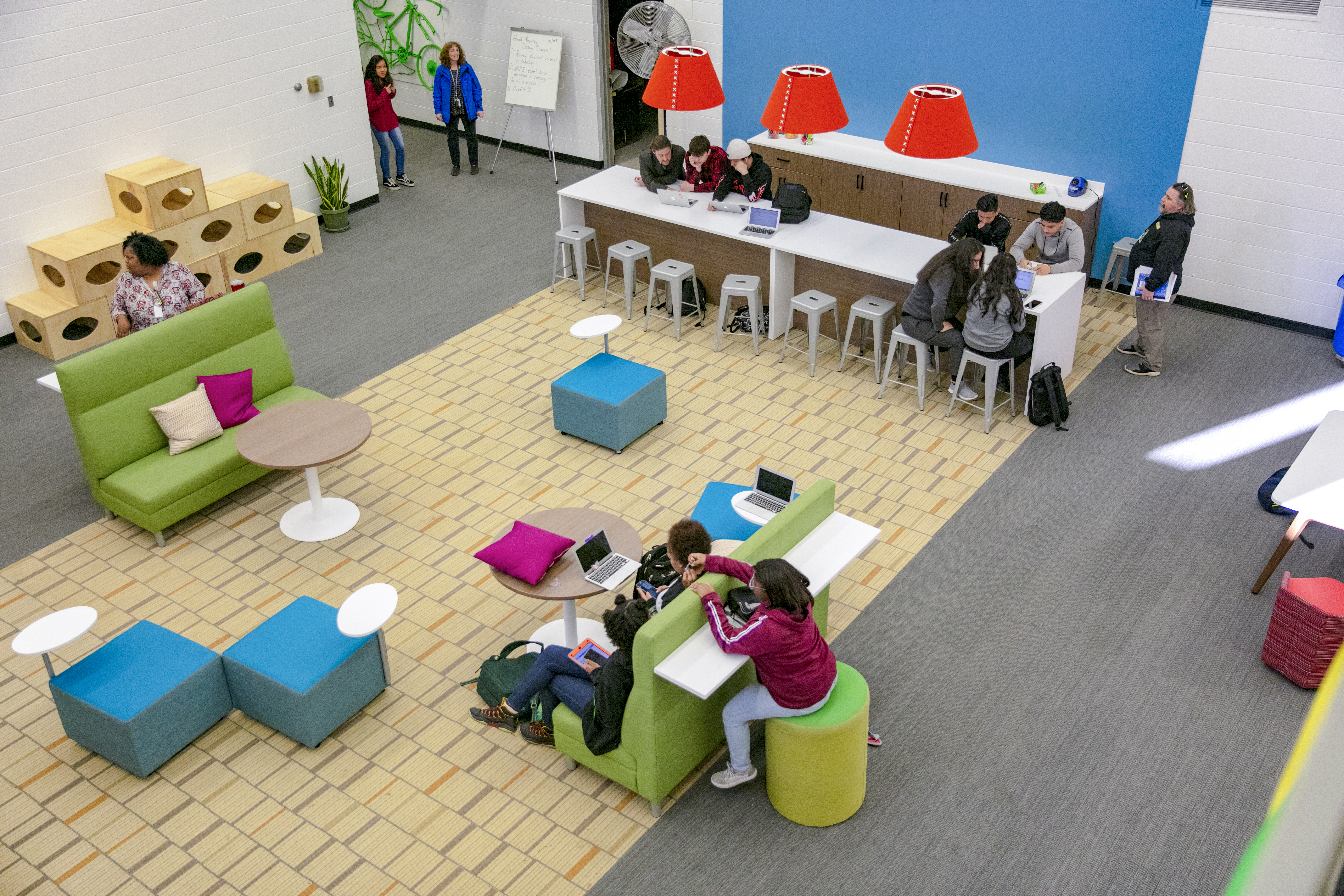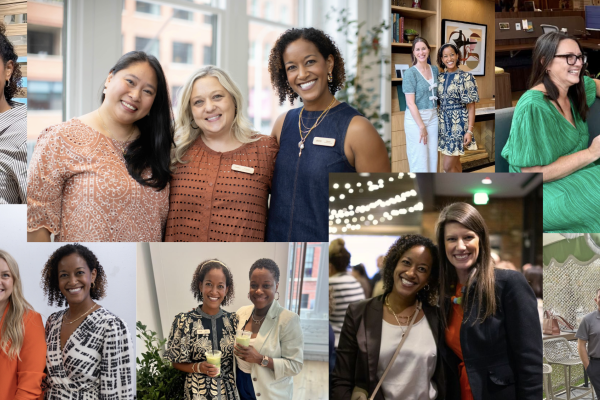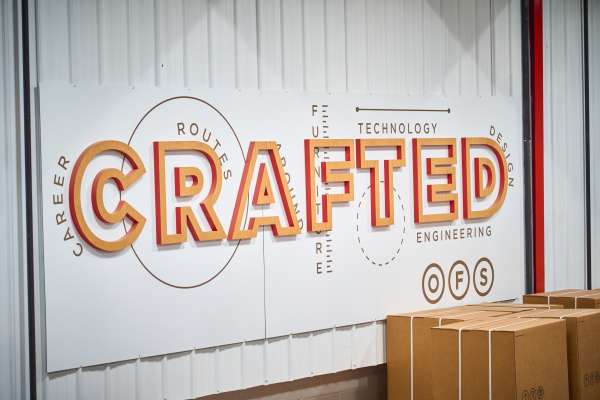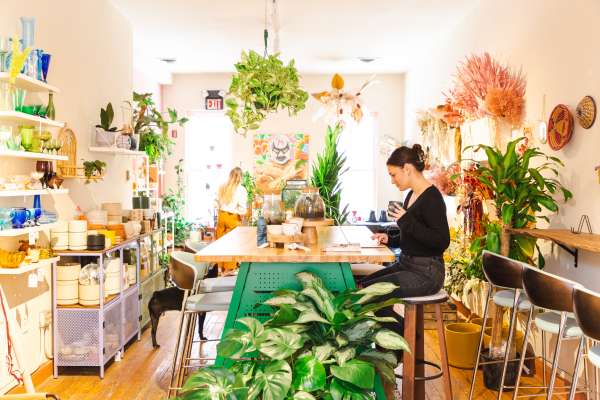A poetic homecoming
When Meredith Williams became principal of North Rowan High School two and a half years ago, it was a poetic homecoming.
Meredith grew up across the street from the school, eventually attending and graduating in 2001. She then went on to attend the University of North Carolina, one of the very first students from North Rowan to receive the prestigious, full-ride Morehead-Cain scholarship. After her time in Chapel Hill, Meredith completed a masters degree at Wake Forest University.
 With her qualifications and talent, Meredith could have written her ticket to go anywhere in the educational world, but she chose to stay in North Carolina. After a stint in Charlotte schools, she became an assistant principal at a middle school in her home district. When the opportunity came to become principal of her old high school, there was no hesitation.
“I set up my office right by the cafeteria. Looking out my office window I could see the house I grew up in, where my parents still lived—and I knew I had come home. I knew my job, here at home, was to improve the system for everyone,” Meredith tells us in her office.
With her qualifications and talent, Meredith could have written her ticket to go anywhere in the educational world, but she chose to stay in North Carolina. After a stint in Charlotte schools, she became an assistant principal at a middle school in her home district. When the opportunity came to become principal of her old high school, there was no hesitation.
“I set up my office right by the cafeteria. Looking out my office window I could see the house I grew up in, where my parents still lived—and I knew I had come home. I knew my job, here at home, was to improve the system for everyone,” Meredith tells us in her office.
When Meredith arrived at North Rowan, the situation was less than hopeful: a struggling high school located in an impoverished district, under-resourced and underperforming. Almost three-quarters of students qualify to receive a free or reduced-price lunch.
Administrators felt handcuffed by regulations and standardized testing requirements, and student outcomes were grim.
“But everyone wanted something different—they were ready for change.”
Meredith and her team recognized a philosophical problem at the root of their school’s performance—one that she feels is common for public schools. In trying to improve state test scores, students were being prepared to memorize and regurgitate facts that they would likely forget upon graduation.
For students coming from an already disadvantaged background, standardized evaluation only set them further behind.

In 2018, a new state legislation called Restart allowed low-performing schools like North Rowan to exercise increased administrative flexibility, similar to that of a charter school. Meredith and her team seized this moment to make significant changes to the curriculum, operations, and environment of the school.
Changing the physical spaces in which learning happens became a first priority.
 In traditional classroom environments across the country, students are confined to desks that are arranged in straight rows and columns, with a teacher providing instruction from the front. Teachers and administrators felt this rigid structure represented the “factory model” that many schools still use.
In traditional classroom environments across the country, students are confined to desks that are arranged in straight rows and columns, with a teacher providing instruction from the front. Teachers and administrators felt this rigid structure represented the “factory model” that many schools still use.
In contrast, North Rowan administrators and teachers used a design thinking framework to reimagine learning spaces—seeking to better reflect the way students actually engage with schoolwork. They drew particular inspiration from the “primordial” learning spaces proposed by educational theorist David Thornburg in his book “Campfires in Cyberspace.” Accordingly, spaces were reorganized around “caves,” secluded spaces that allow for focus and individual work; “watering holes,” gathering spaces designed for collaboration and connection with one another; and “campfires,” instructional spaces where knowledge can be shared with large groups.
One of the most important environments in the school is the design laboratory, a repurposed multimedia center that provides collaborative working space for students.
Administrators and teachers used design thinking to reimagine the learning spaces.
 “The furniture itself especially helps me to stay more comfortable while I’m doing my work, and I feel like it feels like home in a way. You’re free to think outside the box and do whatever.”
“The furniture itself especially helps me to stay more comfortable while I’m doing my work, and I feel like it feels like home in a way. You’re free to think outside the box and do whatever.”
These changes to the physical environment provided a place for a significantly different approach to curriculum as well. In a typical school, the bells ring and students shuffle from room to room for different subjects. Students take notes on concepts and facts that they will later recite on tests.
In the new model being pioneered at North Rowan, classwork includes interdisciplinary design challenges. In these challenges, students create solutions to meet real-world needs, often in their own community. Whether the final output is artistic, functional, or conceptual, students learn by trying different ideas and learning from their experiments.
We interviewed a teacher named Alexis Greer; she described adopting the new curriculum: “We had to step off the edge and not know what was going to happen. For the first time, students hear from their teacher, ‘I don’t know what the answer is,’ and we watch them freak out because they’ve never been in that situation before. But now, even in this short amount of time, they don’t freak out anymore. They understand: ‘Alright, we’re learning together.’”
Arizona, one of the students we spoke with, described a challenge designing classrooms using repurposed shipping containers for a school in Kenya. He worked with his team to build a prototype of the buildings using cardboard, saying,
people.”
 Hugh, a ninth-grader, explained his favorite challenge, a comic book that he and his teammates created. In the book, real historical settings served as a backdrop for stories about superheroes based on the personalities of each team member.
Hugh, a ninth-grader, explained his favorite challenge, a comic book that he and his teammates created. In the book, real historical settings served as a backdrop for stories about superheroes based on the personalities of each team member.
Hannah described how the challenges helped her consider new career paths in business and marketing: “I was never given the chance to really explore, but here in the design lab they give us the room to find what we like; then they give us the resources and tools that we need to try to become whatever we want to be in life.”
Another student named Jose told us about designing a product for an entrepreneurship competition. His idea, a workout supplement with transparent ingredients, ended up winning the competition and inspiring him to consider entrepreneurship as a career path.
Maya, a ninth-grader, said her favorite activity was a challenge to design a toy for infants: “The challenge was to create a toy for a certain age group based on what they can learn from it. So we chose what we wanted to make, like the materials, the cost, the colors, and things like that. It was a lot of choices for us.”
“I was very experienced with giving projects where I knew what the end outcome was gonna be, and how to measure if they achieved it. Now, we often don’t know what the solution is going to be. The students create the solution.” said Ben Butchart, another teacher.
Only time will reveal the long-term impact of North Rowan’s experiment, but the payoff is already clear in conversation with students. Meredith described drops in disciplinary issues and school absences, but for her and others,
joy in learning.”
 But perhaps Alexis, who had taught at the school for five years before the change, summed up the project best:
But perhaps Alexis, who had taught at the school for five years before the change, summed up the project best:
“Everybody deserves the opportunity to break out of the current mold of education and explore what interests them. So many people don’t know what they’re capable of because they’ve never been given a chance. I feel like if we’ve not done anything else, we’ve given these students an opportunity to find out what they’re capable of.”
“They are growing in their perseverance and grit. They’re learning how to polish and develop their work. I have never seen engagement this high with students," Ben Butchart, teacher, said.
Get more of the story on the Imagine a Place podcast:















